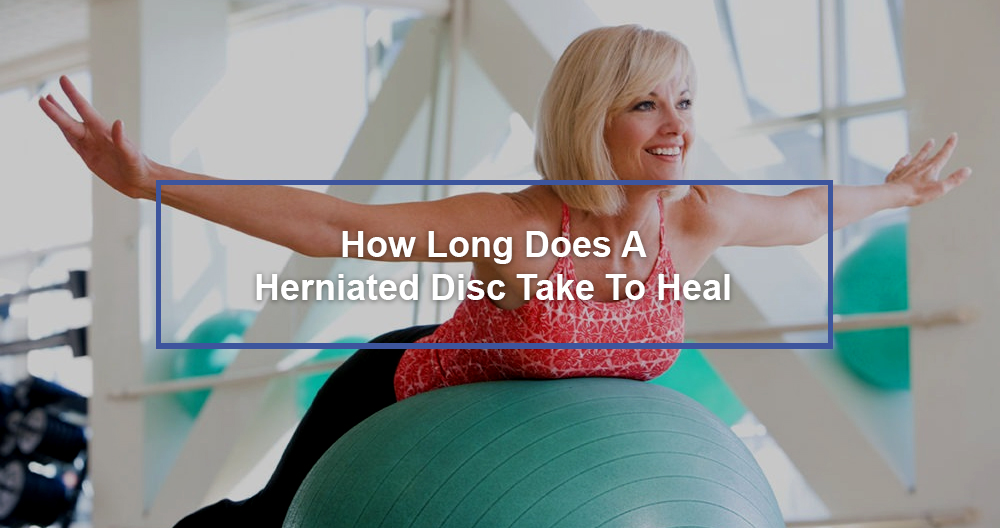
Anyone who has ever suffered from a herniated or bulging disc knows how difficult it can be. You can also move it, and it can get worse. Waiting for it to heal can cause it to go insane. The next thing you know, you are unable to bend down and pick up something. Next thing you know, a shooting, annoying pain is raging in your neck and back. You might think it is a herniated disc. But what exactly does this mean?
What is a disc herniation?
Disc herniation refers to specific changes that occur in the disc. A disc is a soft, rubbery substance between the vertebral body (bones of your spine). The disc acts like a cushion and pad for the bone. The disc’s outer section (the annulus fibrosus) is made of a tough fibrocartilage.
The middle section, the nucleus fibrosus, is made up of water and collagen. It has a gelatinous consistency (jelly-like). Some people refer to the disc structure as a jelly-doughnut. The disc allows the vertebral bodies to move and acts as a buffer against bone compression. This system works well in most cases.
The annulus fibrosus has been torn and some of its gelatinous core is exposed when a disc ruptures. The size of these herniations can be described as follows: bulge, protrusion, extrusion and sequestered fragments. After the disc is moved from its original anatomical location, it can be painful.
Herniated Disc: Causes
Injuries, pressure, age and bad luck can all cause the nucleus to push through annulus fibrosus. This is just like how a jelly-doughnut’s inside would react if you press down on it.
Some people have a herniated spinal disc after an accident, while others may only need to bend down to tie their shoes.
People will most often know when the pain occurred or what caused it. This is because it usually happens immediately.
Another reason for a herniated disc is disc degeneration, genetics, and/or a combination. Herniation can also occur from certain activities such as lifting weights and playing a particular sport.
What does it feel like to have a herniated disc?
A disc herniation is a condition where the nerve or spinal cord presses against a person’s disc. Radiculopathy, which is the result of a pinched nerve, is commonly known as shooting pain, numbness, or weakness. It can be painful in different places depending on which nerve is pinched.
The pain may radiate down your legs, your butt, and your hips if you have a herniated disc in the lumbar spine.
A herniated cervical disc can pinch a nerve in your cervical spine and cause arm pain.
It all depends on how high the herniated disc is and what nerve it is pinching. If you have symptoms of pressure on your spinal cord, it is more serious. It’s commonly called myelopathy, and it involves loss of sensation or control of certain areas of your body.
Treatment for a Herniated Disc
There are a few treatment options that you can choose from:
- Ice and rest.
- Stretches and therapy for the body.
- Nerve calm down can be achieved by taking anti-inflammatory medicine (or muscle relaxers)
- A dose pack containing steroids.
- For those who meet the criteria, surgery is an option.
Surgery on the spine can be dangerous so it is important to weigh your options carefully.
Your doctor should be consulted if you believe you are suffering from a severe herniated or chronic disc disease.
How long does it take for herniated discs to heal?
It takes about four to six weeks for a herniated distal disc to heal. But, depending on how severe it was and where it was located, it may take just a few days to get better. Because most of the time a herniated disc will resolve by itself, time is the biggest factor in healing it. It all depends on how your recovery is going and what treatment you choose.
I am experiencing back pain. An MRI shows that a disc has herniated. Do I need surgery?
In these situations, surgery may be the best option. These are, if you have the following:
- cauda equina syndrome
- progressive strength loss
- intractable pain
- continued symptoms despite nonsurgical treatments
Cauda equina syndrome
This disorder affects the bundle of spinal nerve root roots and is very rare. Urgent surgery is required. This syndrome may cause leg and back pain, weakness, and numbness.
Progressive strength loss
Some people feel weaker than others. If this happens, surgery may be recommended.
Intractable pain
Surgery is indicated if the pain can’t be controlled with medication, injections, therapy, or other treatments.
Failure of conservative care
A comprehensive program of medication, physical therapy and/or injections may not have worked.
What happens to my herniated spine if I do not have surgery?
Patients with different sizes of herniations were examined and found that the majority of herniated disc material had been dissolved by the time they reached six months to one years. The material was reabsorbed faster if it is larger (extrusions). Studies have shown that even though surgical intervention can speed up the initial recovery process, patients with conservative outcomes (nonsurgical) are equally effective after five to ten years.
What is the reason I feel pain in my leg when my herniated discs are in my back?
The spinal cord allows nerves to come out of your legs. They come out of your spinal cord and run into the spinal canal. It is here that the disc can irritate the nerve and send pain down the leg.
These nerves, while still in the spinal channel, are named according to the level of the associated disc (lumbar 5 and L5). They are then grouped together to form named nerves like the sciatic nerve, once they have exited the canal at each vertebrae level.
What are my options to treat herniated discs without having surgery?
Low back pain can often be treated with non-surgical methods. First, physical therapy. Good physical therapy will help the disc heal. It will also improve biomechanics as well as strength. Recent research shows that targeted physical therapy is more effective than random methods. This is often sufficient.
If pain is too severe to attempt physical therapy, epidural steroids injections may be a good option. Epidural injections are safer than other invasive procedures. The complications include bleeding, headaches or infections and, very rarely, nerve injury. Pain relief can be significantly improved. The use of epidural injections has been proven to be effective in reducing pain and restoring function.
Combining these two techniques can make the best treatment possible. The epidural helps reduce pain and makes physical therapy more effective.
The most important points
- Lower back and leg pain can be caused by a herniated disc. Most people will experience relief over time.
- Many people find that they can manage their symptoms using things such as changes in their daily activities, pain medications, exercise and steroid injections. If any of these methods fail, you can try another or combine them.
- Surgery can be more effective than non-surgical treatments for relieving pain. If you have symptoms that persist for at least 6 weeks, and it is difficult to carry out your daily activities due to the pain, surgery may be an option.
- Long-term, non-surgical and surgical treatments can be used to reduce the symptoms and pain.
- There are some risks involved in back surgery. These include nerve damage, infection and the possibility that you won’t feel better. There is always the possibility of developing new symptoms after back surgery.
- If your symptoms persist or get worse, it’s possible to decide not to go ahead with surgery.

